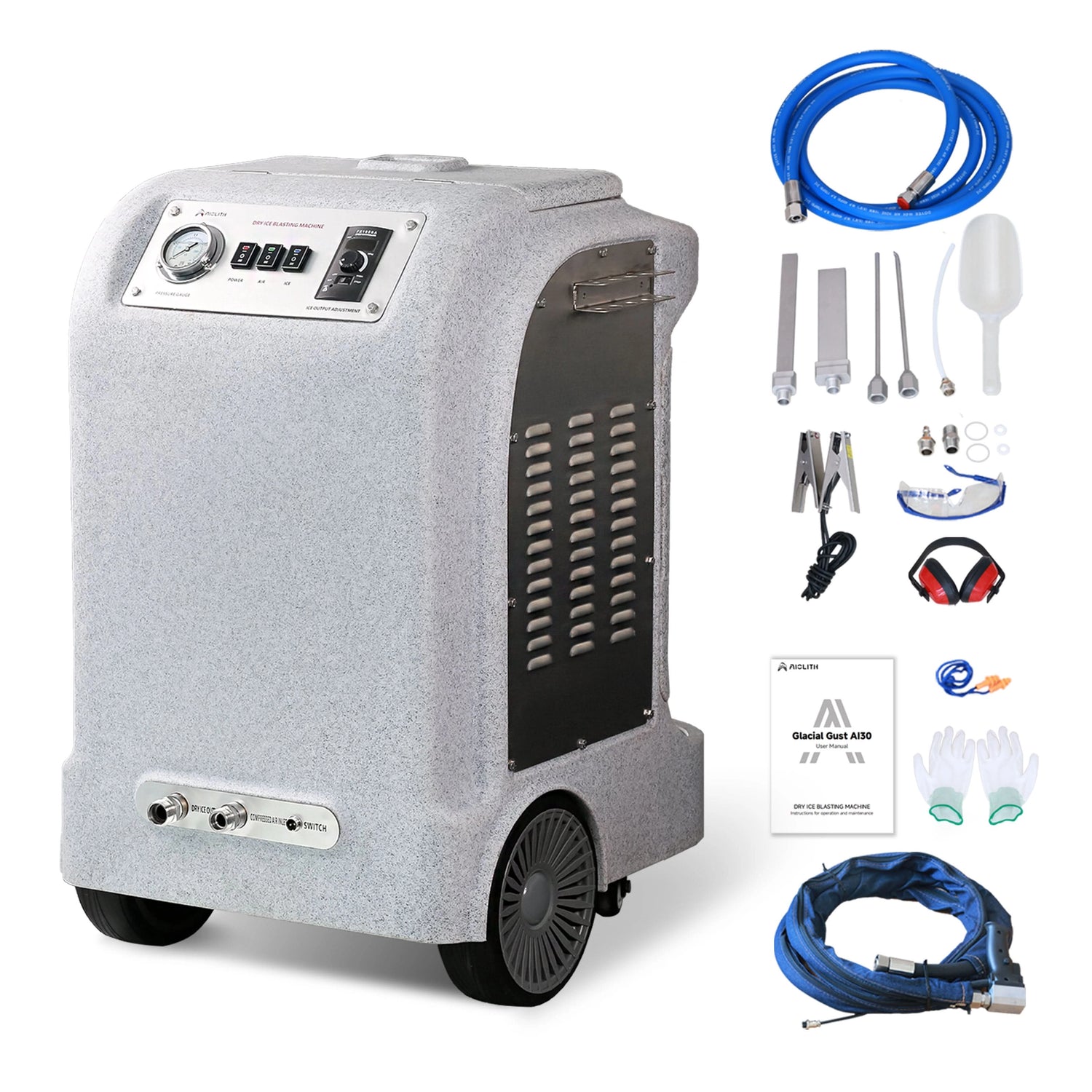Are Brushes or Pads Better for Floor Scrubbers? 11 Critical Insights Every Facility Manager Needs Before Choosing
Share
Why the Brushes vs. Pads Debate Matters in Floor Scrubbing
One of the biggest pain points for facility managers is choosing the right attachment for their floor scrubber. Should you use brushes or pads? Making the wrong decision can mean:
- Increased wear on your machine.
- Shorter lifespan of floors.
- Higher chemical and labor costs.
- Dissatisfied clients or unsafe cleaning results.
Both brushes and pads are vital tools for commercial cleaning, but their effectiveness depends on floor type, soil level, and cleaning goals. With professional machines like the Aiolith floor scrubber, you get the flexibility to use either option for maximum efficiency.
A study in the Journal of Building Engineering (Cao et al., 2021) confirmed that matching the right cleaning method to the surface reduces energy use and extends material life, reinforcing the importance of this decision.
Understanding Floor Scrubber Brushes
Brushes are made of bristles (nylon, polypropylene, or natural fibers) that rotate against the floor to dislodge dirt.
Advantages of Brushes:
- Excellent for rough, uneven, or textured floors.
- Penetrates grout lines and non-slip surfaces.
- Handles heavy soil and grease buildup effectively.
Limitations of Brushes:
- Can be too aggressive for delicate floors.
- Higher wear and tear compared to pads.
- More expensive to replace.
Brushes are best for warehouses, industrial kitchens, and concrete floors where dirt is embedded deep.
Understanding Floor Scrubber Pads
Pads are flat discs made of fibers (often nylon or polyester) designed for smooth surfaces.
Advantages of Pads:
- Gentle on delicate finishes like vinyl or polished marble.
- Cost-effective and easy to replace.
- Excellent for daily maintenance cleaning.
Limitations of Pads:
- Less effective on textured surfaces or grout lines.
- Requires smoother floors to perform well.
- Can wear quickly if used on abrasive surfaces.
Pads are best for retail spaces, hospitals, and offices where floors are smoother and appearance is critical.
Brushes vs. Pads: Direct Comparison
| Feature | Brushes | Pads |
|---|---|---|
| Best For | Rough, uneven, or heavily soiled floors | Smooth, delicate, or polished floors |
| Cleaning Power | Deep scrubbing, heavy dirt removal | Light to medium cleaning, polishing |
| Cost | Higher upfront, longer-lasting in tough conditions | Lower upfront, but replaced more frequently |
| Surface Coverage | Penetrates grout and textured surfaces | Smooth, wide coverage on even floors |
| Ease of Replacement | Slightly complex, fewer replacements needed | Simple, quick changes, more frequent |
| Compatible with Aiolith Machines | Yes – industrial brush heads for deep cleaning | Yes – pad drivers for routine and delicate care |
Why Aiolith Floor Scrubbers Provide the Best of Both Worlds
Aiolith commercial floor scrubbers are engineered for versatility. They allow facility managers to choose between brushes and pads depending on cleaning needs:
- Brush attachments for industrial zones, kitchens, and high-soil areas.
- Pad attachments for hospitals, malls, and offices where delicate care is essential.
- Quick-change systems so staff can swap attachments easily during shifts.
This flexibility ensures that businesses don’t have to compromise. Instead, they get tailored cleaning performance while maintaining machine longevity.
Key Factors to Consider When Choosing Between Brushes and Pads
- Floor Type – Textured tile or concrete benefits from brushes, while vinyl and marble perform better with pads.
- Soil Level – Heavy grease and dirt need brushes; daily dust and light soils need pads.
- Budget – Pads are cheaper per unit but require frequent replacement; brushes last longer in rough conditions.
- Maintenance Practices – Pads are easier to clean but wear quickly; brushes require care to prevent bristle damage.
- Machine Compatibility – Not all scrubbers support both options — but Aiolith machines do.
Extending the Life of Brushes and Pads
- Rotate pads regularly to use both sides.
- Rinse brushes and pads after each shift to remove chemical buildup.
- Follow manufacturer recommendations for replacement intervals.
- Train operators to avoid using the wrong attachment on the wrong surface.
According to Facilities Management Journal (Pitt & Tucker, 2008), preventive care and proper equipment use can reduce consumable replacement costs by up to 25%.
FAQ: Brushes or Pads for Floor Scrubbers
Q1: Are brushes or pads better for commercial kitchens?
A: Brushes are better because they handle grease and textured flooring more effectively.
Q2: Which option is more cost-effective for daily use?
A: Pads, as they are cheaper and sufficient for light soil removal on smooth floors.
Q3: Do Aiolith scrubbers support both brushes and pads?
A: Yes, Aiolith scrubbers are designed for compatibility with both, allowing maximum flexibility.
Q4: Can pads damage delicate flooring?
A: No, pads are designed for gentle cleaning and polishing, making them safer for sensitive surfaces.
Q5: How often should brushes and pads be replaced?
A: Pads may need replacement weekly under heavy use, while brushes can last several months if maintained properly.
Conclusion: Making the Right Choice with Aiolith Scrubbers
So, are brushes or pads better for floor scrubbers? The answer depends on your facility’s floors and cleaning needs:
- Brushes excel in heavy-duty, textured environments where deep cleaning is essential.
- Pads shine in smooth, delicate, and high-appearance environments where gentle care matters.
With Aiolith floor scrubbers, facility managers don’t have to choose just one. Aiolith machines support both brushes and pads, providing a flexible, cost-effective solution for any cleaning scenario.
References
Cao, W., Zhang, L., & Huang, J. (2021). Energy efficiency and surface protection in floor cleaning methods. Journal of Building Engineering, 43, 102537. Read here.
Pitt, M., & Tucker, M. (2008). Performance measurement in facilities management: Driving innovation? Facilities Management Journal, 26(5/6), 241–251. Available here.

